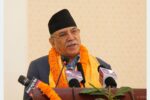For the last couple of weeks, the world has been flooded with the news of Taliban resurgence and the unpleasant events unfolding in Afghanistan.
Afghanistan – the Graveyard of Empires
Afghanistan has a complicated history with the great powers often called ‘the Graveyard of the Empires’. Afghans have rebelled against different powers at different times and the case of the Taliban is the most prominent one in recent times.
In the 1970s, Afghanistan was ruled by the Marxist-Leninist government but in 1979, the power struggle within the government factions led to the assassination of the then leader Mohammad Taraki by Hafizullah Amin who then took over the reins of the government.
At the time, the government was facing opposition from various groups including the Islamist resistance group known as Mujahedeen. Amid the fears that the USA could capitalize on the growing instability, Soviet Union invaded the country.
The United States which was already providing funds to the Mujahedeen increased its support for the resistance. In 1989, Soviet Union withdrew from Afghanistan resulting in chaos resulting in civil war.
Then, one former Mujahedeen commander Mullah Omar started recruiting “Taliban” which means students in the Pashto language. Taliban promised stability and peace against the rampant corruption and excesses of the regime of President Burhanuddin Rabbani. Taliban quickly gained momentum and captured Kabul in 1996.
Taliban revival has been labeled as one of the most disastrous defeats and one more failure of US foreign policy. It also displays the inability of the USA to learn from its past mistakes; Bay of Pigs invasion, Vietnam wars, Kosovo wars, Somalia, Haiti, and so on.
Initially, the Taliban was popular as they mitigated corruption, curbed lawlessness and provided a safe environment for flourishing trade and commerce.
However, the Taliban introduced a strict form of Sharia law such as public execution and amputations. Wearing Burka for women and growing-beards for men was made compulsory.
Although, the issues of human rights abuse, honor killings and exploitation of women were raised frequently by numerous international groups, the 9/11 attacks of 2001 proved to be their reason for demise.
Their action of sheltering Osama Bin Laden and refusing to hand him over to the USA led to their swift downfall.
What kept the Taliban alive and led to their revival?
The first and foremost thing is the strong historical and cultural background. Taliban used the history of Soviet occupation in the 1980s (still present in the memory of the Afghan middle-aged generation) and also the proud legacy of driving them out of their holy land in 1989.
Moreover, the Taliban also cashed in the resentment of some affluent Pashtun tribes towards the foreign occupation who they thought were disturbing their cultural practices, rituals and poppy fields.
Widespread corruption in Afghanistan was another major reason behind the revival of the Taliban. According to Transparency International Report of 2020, Afghanistan ranks 165 out of 180 nations surveyed.
Most of the Foreign Aid, grants and national treasury have been embezzled by the Afghani political elites and businessmen related to them.
The Warlords and Generals regularly sliced off chunks of the money supposed for the medical expenses, ammunitions and the facilities of ghost soldiers which existed only in the ledgers.
Thus, it is understandable why would any Afghan national army in the remote countryside sacrifice their lives for those relaxing in their luxury villas.
According to Reuters, citing Russian sources, President Ashraf Ghani was seen leaving Kabul with four cars full of cash, some of which they even tried stuffing into the helicopter.
Sentiment from fellow Muslim countries is another factor responsible for Taliban resurgence. According to sources, the Taliban has been receiving millions of dollars in grants from Islamic charities and funds.
It has also been alleged that they received regular training from Inter-Services Intelligence (ISI), a security wing of Pakistan that is also accused of sheltering and aiding the militants.
Additionally, the sprawling sources of Taliban’s finances resulting from drugs, extortion, real estate and mining of iron -ore, marble, copper, gold, zinc and other rare-earth minerals further consolidated their position.
Among the immediate reason was US President Joe Biden’s declaration of pulling back the remaining US Armies from the wretched land. The decision has been labeled far from logical, messy and revealing the limitations of the US military.
What does it mean for the USA, Afghanistan, and the rest of the world?
Taliban revival has been labeled as one of the most disastrous defeats and one more failure of US foreign policy. It also displays the inability of the USA to learn from its past mistakes; Bay of Pigs invasion, Vietnam wars, Kosovo wars, Somalia, Haiti, and so on.
The most ironic of all, as Marwan Bishara of Al Jazeera, writes, it took the USA four presidents, trillions of dollars and 20 years to replace Taliban from Taliban, and the biggest question looming is who transformed who.
In fact, the US invasion of Afghanistan began with more positive signs. For instance, it changed the status of Human Rights, especially those of females who were treated as if they were animals, not humans.
The percentage of female students in secondary level rose from 6 percent in 2003 to 39 percent in 2017, during which 100,000 female students attended the university.
Between 2001 and 2017, women’s life expectancy increased almost ten years from 56 to 66. Also, the share of female civil servants rose to 20 percent.
Nevertheless, the latest declaration of Biden to pull out his countrymen from Afghanistan has shown once again that their endeavors of creating a more peaceful, just and developed state in other parts of the world are counter-productive.
The deaths of 240,000 Afghans, 70,000 of them civilians, since 2001 and the never-ending corruption discussed earlier corroborate this fact. America’s image as a guarantor of its allies’ security has been questioned.
The most ironic of all, as Marwan Bishara of Al Jazeera, writes, it took the USA four presidents, trillions of dollars and 20 years to replace Taliban from Taliban, and the biggest question looming is who transformed who.
What Next?
The demographic statics of Afghanistan shows that almost 89 percent of Afghans practice Sunni Islam (same as that of Taliban).
The Shia Muslims make the largest minority at 10 percent and the rest include Sikhs and very few Hindus. Taliban, who earlier was much vocal against the minorities have openly declared their appreciation towards Shia Muslims by appointing Hazara governor for Hazara Bamiyan region which is composed of a predominantly Shia population.
Taliban is also advocating changed attitudes towards women’s rights and their participation in civil services and universities.
The attachment towards China, regardless of the latter’s treatment of Islamic Uyghurs, provides an opportunity for China to become a major player in the region. China would gladly take this chance to extend their BRI project through a friendly Taliban government.
Zabihullah Mujahid, the Chief Spokesperson for Taliban has repeatedly stated that there would be no retribution against those who worked earlier for the previous governments, and also that women could enjoy their rights “within the limits of Islam”.
Nevertheless, these speeches denoting the changed Taliban are not enough to reassure the general public and international community anytime soon.
Human Rights Watch group has reported scores of cases of recent abduction and human rights violations, the most recent and noticeable being the execution of popular artist and comedian Nazar Mohammad, known as Khasha Zwan.
According to the reports, he was abducted from his home on July 22, 2021; beaten and shot dead by multiple gunshot wounds.
All the recent promises by the Taliban only display their wish for legitimacy and recognition from the international community as well as the continuous inflow of foreign aid.
They know very well that it would be a daunting task to rebuild the war-torn nation, run the government, or even provide basic administerial services to the general public.
The attachment towards China, regardless of the latter’s treatment of Islamic Uyghurs, provides an opportunity for China to become a major player in the region. China would gladly take this chance to extend their BRI project through a friendly Taliban government.
Pakistan is also wary of the Taliban’s next actions as this would determine the number of Afghani refugees pouring immediately into the Pakistani territories.
(Bishnu Chaudhary is a Teaching Faculty at Nepal Engineering College; and Upendra J. Shahi is a National level Secretary of Youth Federation Nepal)








Comment